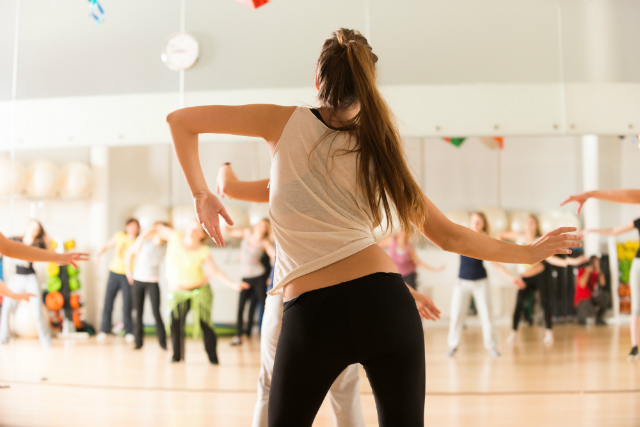Dance improvising can be a tricky art to master, especially when dancers are starting out. However, once you’ve got certain skills down pat, it will be easy for you to break out improvised moves pretty much anywhere, whether you’re in a street competition or looking to impress people during a dance audition. Have you ever improvised a few dance moves before? If you haven’t, don’t worry. Use these five starter tips to help you improve your improv dance moves anywhere you go.
1. Don’t Be Scared
Most dancers starting improvised dance moves may not know where to begin, especially if they’ve been given complete guidance and structure on how to dance until now. Dancers might be worried that they will look foolish or weird in front of their colleagues. However, it’s just the opposite! Most dancers don’t realize they have natural rhythm and beat from years of practicing choreography. Have fun with it and have confidence. Improvised dancing can be challenging, but it’s a way that allows people to let loose and express themselves. Regardless of what move you come up with, it will have some structure and flow.
Beginning improvised dance is also a great time to get to know your body and find out what kind of dance you really like. You’ll learn how your body naturally moves and what types of dancing you appreciate most, whether it’s modern or old school. If you’ve already done a little choreographing, improv dance will help you become a better teacher. You might come up with a few moves you really like and learn how to be more creative on the fly, allowing for more original dances.
2. Begin With a Frame
When you’re starting out, it’s good to have a little structure in your improvising. If you’re taking a dance improvisation class, it might be focused on one part of dancing, such as fluid movement, dancing gleefully or even working on space. Regardless of what the prompt is, don’t watch others around you. Instead, watch the instructor and listen to yourself. What do you think of when you picture fluidity? How do you express glee? Starting with your own emotions and feelings is a great way to help guide yourself through the process.
3. Go In With An Open Mind
If you enter an improvisation class and feel embarrassed or judgmental from the get-go, it’s not going to go well. You’ll constantly be judging your moves in the mirror or might be too focused on what others in the class are doing instead of what you are expressing. If you act this way, you won’t allow for any creative energy to develop. Only practice improvisation with an open mind and remember that it’s all about having fun.
If you look a little silly, so what? Every move helps guide you toward a better rhythm and motion. Going in with an open mind helps you stay in the moment and move freely instead of thinking about what’s coming next. Once you’re doing this, you’re improvising dance moves! Then you can work on which moves you like and can perfect them.
4. Follow Others, But Not Too Much
If you’re taking a dance improvisation class, your teacher might ask your class to show each other your moves. When this happens, look at other peers in your class and see what moves they’re creating that make their dances interesting and original. Of course, don’t copy these moves yourself, but notice what works within a dance piece and what doesn’t.
Watching others dance may open your mind to new types of dance that you didn’t initially consider in your own set of moves. If you’re really struggling and finding it difficult to create your own segment, perform in front of a few friends and see what they think. You can also watch tutorials and how-to videos on the best ways for improv dance to help inspire you.
5. Go Outside Of Your Comfort Zone
Improv dance is all about exploring new things. If you have a couple of regular moves you always go to, or there’s a certain type of dance you like, leave it at the door. Instead, go outside of your comfort zone and try new types of dance, even if you’re not familiar with them.


